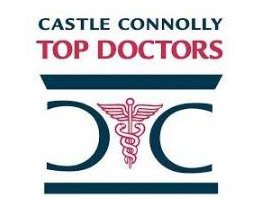Nonsurgical spine treatments in NJ and NY
Surgery is not always necessary to effectively treat many different kinds of back problems. University Spine Center may recommend a number of nonoperative treatments for your back.
Bracing
A brace is an external device designed to provide your spine with support and to help reduce movement, which can facilitate healing. Braces include:
- Cervical collar (a soft neck brace)
- Lumbar corset (rigid or soft)
- Thoraco-lumbo-sacral-orthosis, or TLSO (plastic)
Your physician will discuss when, how long and why the brace is to be worn.
Alternative therapies
Complementary and alternative medicine (CAM) is gaining increasing attention in medical circles. While University Spine Center does not endorse these practices, many patients do get pain relief from such therapies as acupuncture, biofeedback, yoga, aromatherapy and massage.
Medication
Drug therapy can be a crucial element in managing your back problem. There are many effective medications available both by prescription and over-the-counter to help relieve pain. We may also recommend muscle relaxants and sedatives in certain cases. While medications can provide much-needed relief, they are powerful drugs that should be treated with respect.
Tell us about all drugs you are taking, including over-the-counter medications as well as vitamins and other supplements. Take drugs exactly as prescribed.
Ask us about side effects. If you experience any side effects, contact University Spine Center at once. Do not give your prescription medication to other people.
Ask your physician how to manage breakthrough pain – don’t just double up on your dose on a bad day.
Pain management for spinal disorders
Back pain is one of the most common types of pain, and the medical specialty called pain management helps people cope with long-term persistent back pain. University Spine Center may provide pain management consultation as part of your therapy. In some cases, pain specialists may recommend spinal cord stimulation, radiofrequency ablation or an intrathecal infusion pump.
Physical therapy
Physical therapy, or PT, works to help improve your physical condition, which can reduce pain and help you gain strength. PT might be:
- Active (exercise on land or in the pool)
- Passive (spinal manipulation, ultrasound)
- Biomechanical (improved posture)
Spinal injections
University Spine Center may recommend that you have a local anesthetic and corticosteroid injected into your spine. We perform these injections under a kind of video X-ray called a fluoroscope. Your physician will insert the medication into the precise area necessary to deliver pain relief.
An epidural injects the medication into the area between the dura mater, which protects the spinal cord from spinal cord injury, and the bony spinal canal. A transforaminal injection, or nerve block, is injected into the protective membrane, or pia mater, that covers the nerve root. A facet block injects medication to treat pain arising from the facet joints, or the point where one vertebra forms a joint with the one below it (called the zygapophyseal joint).
Other therapies
Many people have benefited from a spinal cord stimulator or neurostimulation device. These devices send low-energy electrical pulses to a specific area of the spine in order to help block pain signals. A spinal cord stimulator is implanted in the abdomen with a wire (called a “lead”) placed near the spine.
Radiofrequency ablation (sometimes used to treat cancer or heart problems) can also be performed to help treat spine pain. Under fluoroscopy (video X-ray), the physician will insert a needle into the facet joint (the joint formed between two adjacent vertebrae). Once the needle is in place, radiofrequency energy is transmitted that can ablate, or destroy, very small areas of tissue. This procedure is sometimes called rhizotomy.
Goals of nonsurgical treatments
University Spine Center knows that some back problems require surgical interventions, but others do not. The goals of nonoperative care are to correct problems and relieve symptoms in a way that is most appropriate for your condition.
What to expect from injections, radiofrequency ablation or spinal cord stimulation
If you need an injection or radiofrequency ablation, you will be given a local anesthetic for the procedure,. The most time-consuming portion of the procedure is locating the exactly correct spot for the injection or ablation, which usually involves fluoroscopic guidance. You will be given numbing medicine so that you do not feel pain with the injection or ablation.
A spinal cord stimulator is an implantable device. The implantation procedure is typically done under local anesthetic and involves placing a wire at or near your spine and connecting it to the pulse generator (main unit), which is implanted in your abdomen. We can often perform this surgery on an outpatient basis and, in some cases, in an hour. The spinal cord stimulator is battery-powered and will last for several years before it requires replacement.






